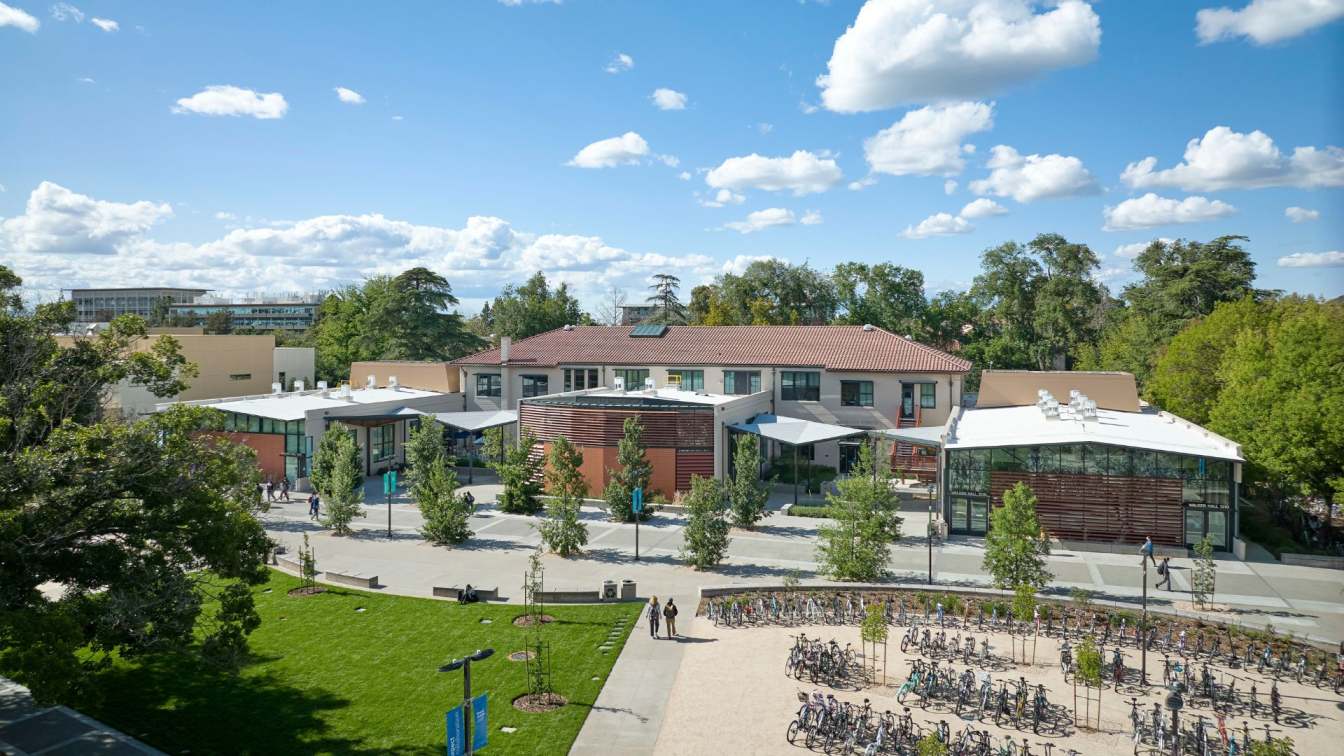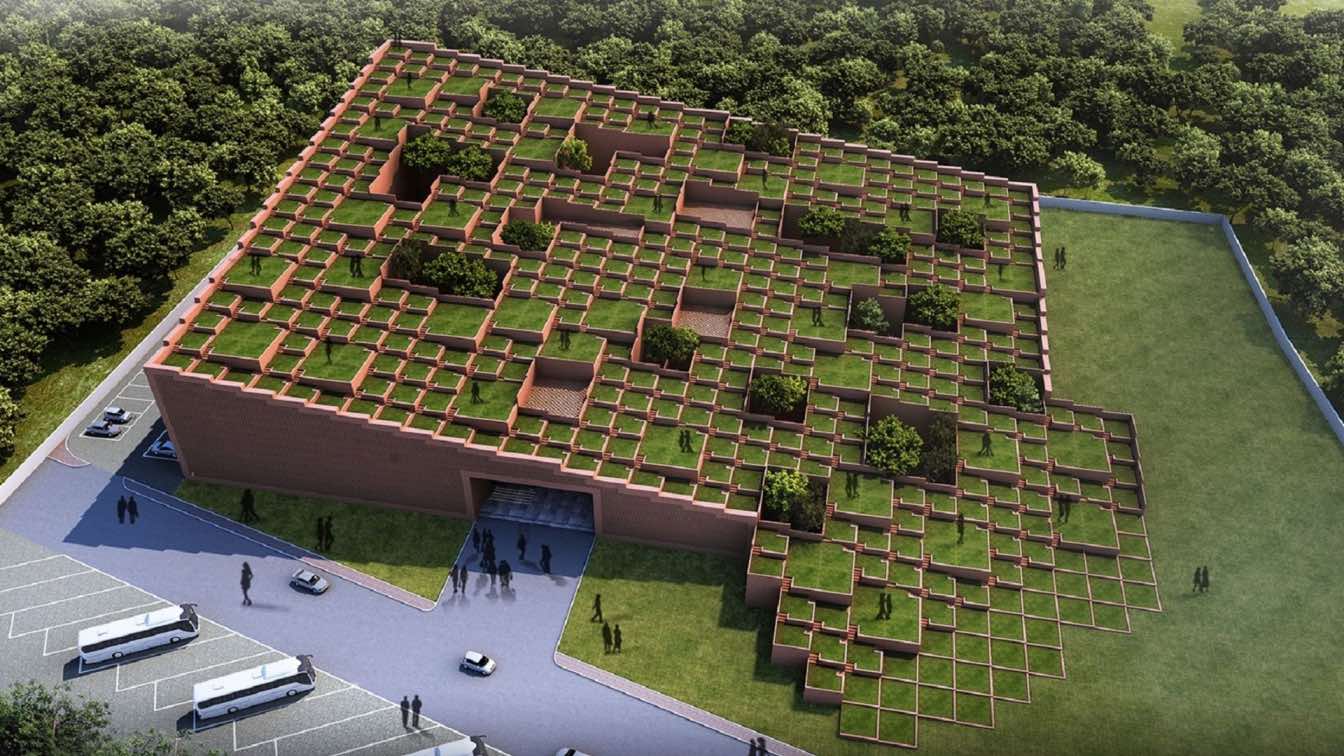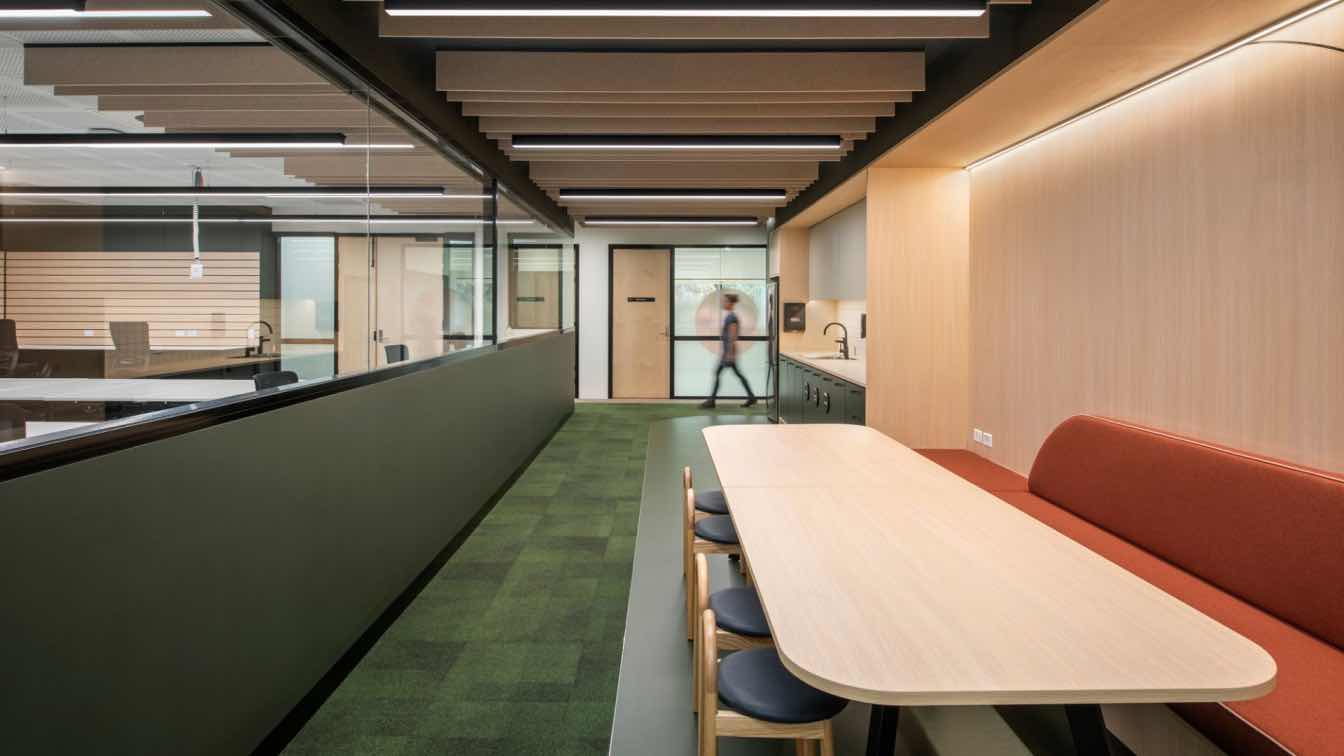Forming the space according to the trend | Zhejiang Jiande Aviation Industry- University-Research Base.
gad: In recent years, the aviation industry in China has accelerated rapidly. Relying on this, Jiande Aviation Town has become the only characteristic town in Zhejiang province to build the whole industrial chain of general aviation. Jiande Aviation Training Base is located in the center of Jiande Aviation Town, which will focus on the role of aviation training and education. As the first practice for gad to adopt general contracting mode of EPC project, the project integrates design creativity and construction activities, and constantly adjust materials, process, cost, construction quality, schedule, coordination and management and other links, so as to achieve a high degree of completion of the design.

Design Philosophy of Taking Advantage of the Trend
Jiande Aviation Training Base itself is a small mound. With mountains rolling in the distance, the dialogue between architecture, mountains, water and history begins. Preserving the original nature of the site was the starting point of our design. Taking a page from Geoffrey Bawa’s approach to the relationship between architecture and nature, it is relaxing and enjoyable for the users, while inspiring us to give the site a rich spatial experience. Therefore, under the natural curtain, artificial intervention in the base landform should be minimized as far as possible, and the strategy of “integrating mountain and diverting water” should be used to shape with the situation to create a sense of land rich in natural memory. It continues the impression of rolling mountains. The building adopts the roof with undulating slope, the appearance of which is strewn at random, presenting the contrast between extending upward and connecting the ground downward.
Focusing on the internal terrain, the design adopts three separate but closely connected groups of buildings, with u-shaped and L-shaped forms enclosing the inner courtyard. The logistics function space is placed on the west side of the plot, and the space for teaching, meeting and other functions is placed on the east side of the plot. The composite space functions do not interfere with each other. In addition, the water body is another continuation of the memory of the place. There was no water channel in the site originally, so we introduced the pond in the southwest of the site to create a water space and a water-friendly wandering path.

Place Empathy for Wandering Experience
Walking under the corridor, complying with the ups and turns of the terrain, the mood also relaxes with the footsteps. The prototype of this kind of wandering experience comes from the Xxi Villa around the town, which uses the connecting corridor system to organically connect the building with the external environment, achieving a rare place empathy.
The whole building volume is stilted and supported by thin columns, forming a gray space under the veranda for free shuttling and walking. Different spatial scales deepen the multiple dimensions of the wandering experience. Along this landscape corridor, teaching buildings, hotels and offices at the core of the campus are efficiently connected with other public supporting spaces.
On the premise of not destroying the basic form of the mountain, it maximizes the use of space, and appropriately cuts and gouges the mountain to form the space where the entrance activity square and lecture hall are integrated into the mountain. The entrance square that stimulates communication, the book bar adjacent to the water, and the outdoor steps suitable for rest and reading are subtly interspersed on the wandering path, which are suitable for movement and stillness, presenting varying sceneries with changing view-points.

Organic Integration of the Landscape and the Architecture
The combination of landscape and architecture has real growth under the ferment of time, which is the fourth dimension. Architecture provides landscape with boundary, scale, form and background, while landscape reshapes the spirit of place and activates the overall space system from the perspective of spatial attributes and functional requirements.
Stones, water features, planting and other elements seem to be randomly thrown into the grey space, so that the dialogue between architecture and landscape is further strengthened.
They are arranged as discreetly as possible, and permeate naturally and skillfully. By means of overhead, overhanging, connection, embedding and enclosure, it creates a well-retractable outdoor and semi-outdoor space system, breaking the boundary between architecture and landscape, and incorporating landscape into the spatial layout of the building to the greatest extent. Architecture is not an isolated product of climate and culture. The idea of “porous architecture” is promoted from the humid and rainy characteristics of Jiande, where the ground floor is raised to achieve air convection and create the possibility of space permeability. In the end, the design creates a place where nature is embedded in the building and the building embraces nature and where you can tour, live and enjoy.

Garden System and Planting Configuration
The gardens of various themes in the courtyard broaden the dimensions of the “tour”. The hilltop Garden is the largest core garden in the park, and the landscape design has rearranged the shape of the mountain to better integrate with the surrounding buildings. The Green Hill also reserved a lot of arbor planting area, which is out of consideration for the future evolution of the mountain. It also becomes the core green lung of the park to regulate the micro-climate of the site.
The rain garden is located in the atrium of the logistics building, and the landscape design combines the current height difference to create a sense of sequence of hills to echo the mountains in the distance. The hill interface forms an S-shaped ecological gully with wet plants on both sides. During the rainy season, the rainwater is collected from the grass ditch to the ecological pond at the lower level, which just provides the viewing experience for the sunken lobby of the hotel. During the dry season, the pond is still filled with water, and ditches irrigate the characteristic landscape planting belt.

Conclusion
Under the general contracting mode of the EPC project, the dimensions of design are constantly broadened, and we are exploring new paths, but always adhere to the balance between creativity and precision. The interpretation of space and time is consistent, so that the design source to the completion of construction forms a closed loop.


































